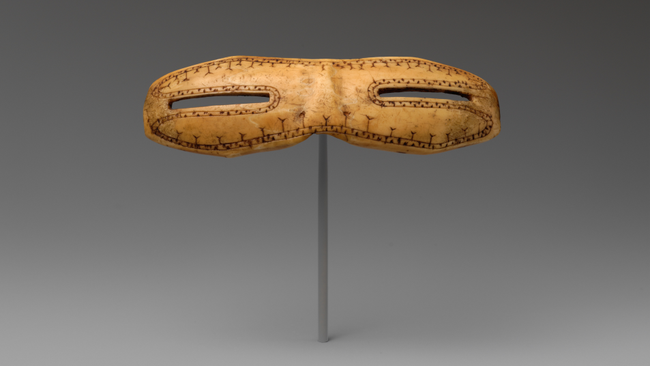Thule snow goggles: 1,000-year-old Arctic eyewear carved from walrus tusks
By Kristina Killgrove
published yesterday
These carved snow goggles were a necessary accessory for Arctic existence centuries ago.

A carved piece of walrus bone in the shape of goggles with narrow slits at the eyes and incised decorations sits on a thin cylindrical stand against a grey background
An example of snow goggles carved from walrus ivory (Image credit: Metropolitan Museum of Art)
Name: Thule snow goggles
What it is: Eye protection carved from walrus ivory
Where it is from: Nunavut, Canada
What it tells us about the past:
These goggles, crafted by the Thule people who lived in Alaska and northern Canada around 800 to 1600, are a very early example of an accessory used to protect the eyes from Arctic snow and ice. In the Inuktitut language, the goggles are known as iggaak.
Carved from walrus ivory, the goggles were made sometime between 800 and 1200. The eyewear measures 5 inches (12.7 centimeters) across and 1.1 inches (2.9 cm) tall, and it may have once had leather or sinew straps to affix it to someone's face. This particular example was collected around 1930 by a Royal Canadian Mounted Police officer on north Baffin Island in the Nunavut territory, according to the Metropolitan Museum of Art in New York City, where the object is on display.
These snow goggles are easily identifiable by the wide and narrow eye slits, which functioned to shield the wearer from eyeball sunburns, as well as from the blowing ice and snow, while allowing a wide field of vision. They have been found throughout the Arctic, suggesting they are highly effective eye protection. This example is decorated with engravings of double lines, spikes and Y shapes, which were likely significant to the wearer.
More:
https://www.livescience.com/archaeology/thule-snow-goggles-1-000-year-old-arctic-eyewear-carved-from-walrus-tusks
